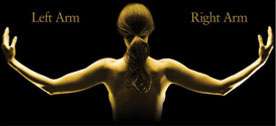Ulnar Tunnel Syndrome
What is Ulnar Tunnel syndrome?
Ulnar tunnel syndrome is a disorder that occurs when abnormal pressure is put upon the ulnar nerve as it passes through Guyon’s canal in thewrist, which causes tingling, numbness, and gradual loss of function in the hand as the result of nerve damage.
What causes Ulnar Tunnel syndrome?
Often, it is overuse of the wrist that causes Ulnar tunnel syndrome, especially if it involves work in which the wrist is bent down. Constant palmar pressure can also be a factor, and as a result this syndrome is seen among cyclists and weightlifters, as a result of how they use their hands or from vibratory tools such as jack hammers. As the ulnar nerve passes through Guyon’s Canal (its route through the wrist), it often comes into contact with the hamate carpal bone, and a part of this bone, known as the hook of hamate, can become detached from the bone and exert pressure on the nerve, causing the problem. Additional causes may result from compression from a mass such as an ulnar artery aneurysm in a condition known as “Hypothenar hammer syndrome” or from a simple ganglion cyst.
What are symptoms of Ulnar Tunnel syndrome?
The first indicators of ulnar tunnel syndrome are numbness and tingling in the little and ring fingers of the affected hand, most commonly worst in the early morning, soon after waking. Over time, sensation may decrease in these two fingers, while pain develops in the wrist, and the muscles of the hand controlled by the ulnar nerve will fail to function properly, leading to clumsiness and a weakening of the pinch grip.
How to diagnose Ulnar Tunnel Syndrome
A comprehensive medical history of the illness is necessary to help the doctor determine what type of ulnar nerve compression you are suffering from, and a physical exam will allow him to pinpoint exactly where in the wrist the pressure is being exerted. Should the physical exam prove inconclusive, it may be necessary to have a nerve conduction velocity, (NCV) test. This will allow the pinpointing of specific areas in which the nerve is being affected. An EMG, or electromygram, can also be used to determine if, and to what extent, the muscles of the hand and forearm are affected by the pressure on the ulnar nerve. A routine xray or CT scan may reveal occult fractures. An MRI with arteriogram may reveal an aneurysm.
Non-surgical treatment of Ulnar Tunnel syndrome
The first response to this condition is to stop doing whatever it is that seems to be causing the problem. Heavy lifting and grasping should be curtailed, and putting pressure on the palm should also be lowered to a minimum. Padded gloves may also help. If this is not possible, however, there are other alternatives, such as a wrist brace. The brace will hold the wrist and hand in a position so as to alleviate as much of the pressure as possible, and this may prove especially effective in lowering the pain one feels upon waking in the morning, which can be quite intense.
Surgical treatment of Ulnar Tunnel syndrome
Should all other attempts to alleviate the symptoms of Ulnar tunnel syndrome fail, surgery may be necessary. Like the surgery for carpal tunnel, this one is also a “release” surgery, where the ligament that crosses Guyon’s canal is cut in order to release the pressure on the nerve. The gap left between the two pieces of ligament will eventually grow over with scar tissue, closing the canal again, but with much more room for the nerve to move around.
How can Dr. Knight help you with Ulnar Tunnel syndrome?
Ulnar tunnel syndrome can cause debilitating pain, and it is important that this pain be alleviated so that you can go about your daily routine. Dr. Knight is well-trained in the release of these types of injuries, so in his care you will be treated and, hopefully, freed of your affliction in as short a time as possible.
Disclaimer
HandAndWristInstitute.com does not offer medical advice. The information presented here is offered for informational purposes only. Read Disclaimer

